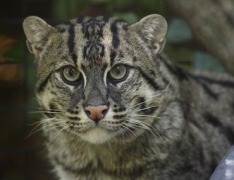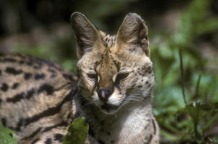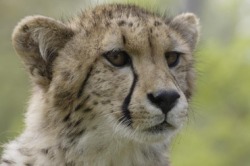cheetahs
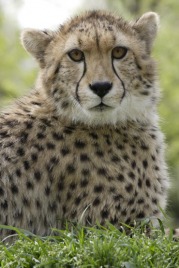
Cheetahs are small but fast! Reaching speeds of 60 to 70 mph! There are two main types of cheetahs, the spotted cheetah and the king cheetah. The king cheetah's spots are joined in places to make a big stripe. The king cheetah is rare. There are several geographically isolated populations of cheetah, all of which are found in Africa or Southwestern Asia. A small population (estimated at about fifty) survive in the Khorasan Province of Iran, where conservationists are taking steps to protect them. It is possible, though doubtful, that some cheetahs remain in India. There have also been several unconfirmed reports of Asiatic Cheetahs in the Balochistan province of Pakistan, with at least one dead animal being discovered recently.
The cheetah thrives in areas with vast expanses of land where prey is abundant. The cheetah likes to live in an open biotope, such as semi-desert, prairie, and thick brush, though it can be found in a variety of habitats. In Namibia, for example, it lives in grasslands, savannahs, areas of dense vegetation, and mountainous terrain.
In much of its former range, the cheetah was tamed by aristocrats and used to hunt antelopes in much the same way as is still done with members of the greyhound group of dogs.The adult cheetah weighs from 88 to 140 lb. Its total body length is from 45 to 53 in.While the tail can measure up to 33 in in length. Males tend to be slightly larger than females and have slightly bigger heads, but there is not a great variation in cheetah sizes and it is difficult to tell males and females apart by appearance alone. Compared to a similarly-sized leopard, the cheetah is generally shorter-bodied, but is longer tailed and taller (it averages about 35 in tall and so it appears more
streamlined.
Lions
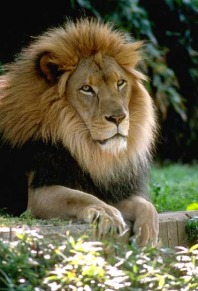
Lions are the second largest cats. They are nicknamed king of the jungle! But they don't live in the jungle at all! The Male lions are called lions and female lions are called a lioness. You can tell the difference by looking at there neck. Lions have manes, when they are full grown. Lioness don't have a mane! When a lion's mane is darker, it means it is older and stronger. You see the difference? With some males exceeding 550 lb in weight. Wild lions currently exist in Sub-Saharan Africa and in Asia with a critically endangered remnant population in northwest India, having disappeared from North Africa, the Middle East, and Western Asia in historic times. Until the late Pleistocene, which was about 10,000 years ago, the lion was the most widespread large land mammal after humans. They were found in most of Africa, much of Eurasia from western Europe to India, and in the Americas from the Yukon to Peru.
Lions live for around 10–14 years in the wild, while in captivity they can live over 20 years. In the wild, males seldom live longer than ten years as fights with rivals occasionally cause injuries. They typically inhabit savanna and grassland, although they may take to bush and forest. Lions are unusually social compared to other cats. A pride of lions consists of related females and offspring and a small number of adult males. Groups of female lions typically hunt together, preying mostly on large ungulates. The lion is an apex and keystone predator, although they will scavenge if the opportunity arises. While lions do not typically hunt humans selectively, some have been known to become man-eaters and seek human prey.
Lioness
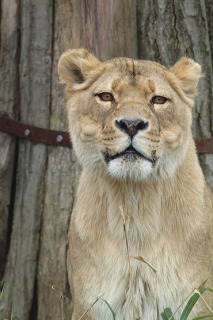
Lynx
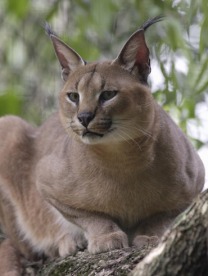
They have extremely good hearing and they also have 28 teeth, which, when paired with the jaw structure, stab deeply into their prey. This can be especially helpful to the lynx because they are not the most efficient hunters and they lose most of their prey to a variety of factors.
The smallest species are the Bobcat and the Canada Lynx, with average weights 22 to 29 lb. While the largest is the Eurasian Lynx, with average weight 40 to 55 lb. Up to a reported maximum of 88 lb. but there is considerable variation within species.

